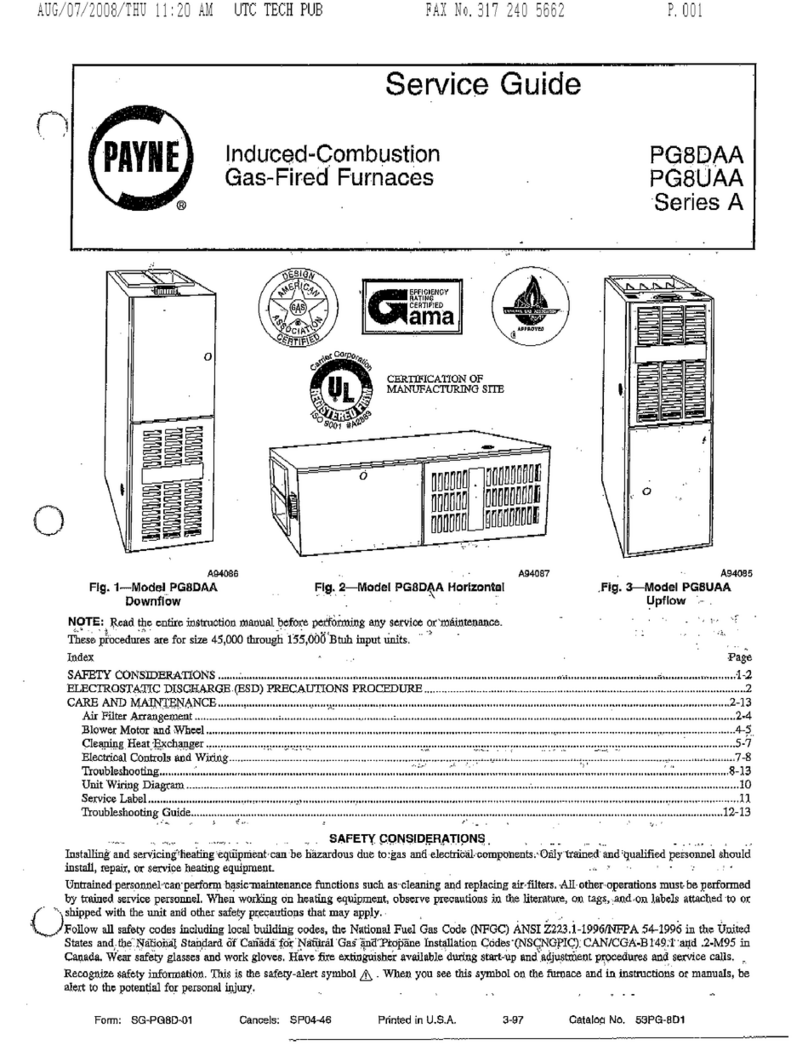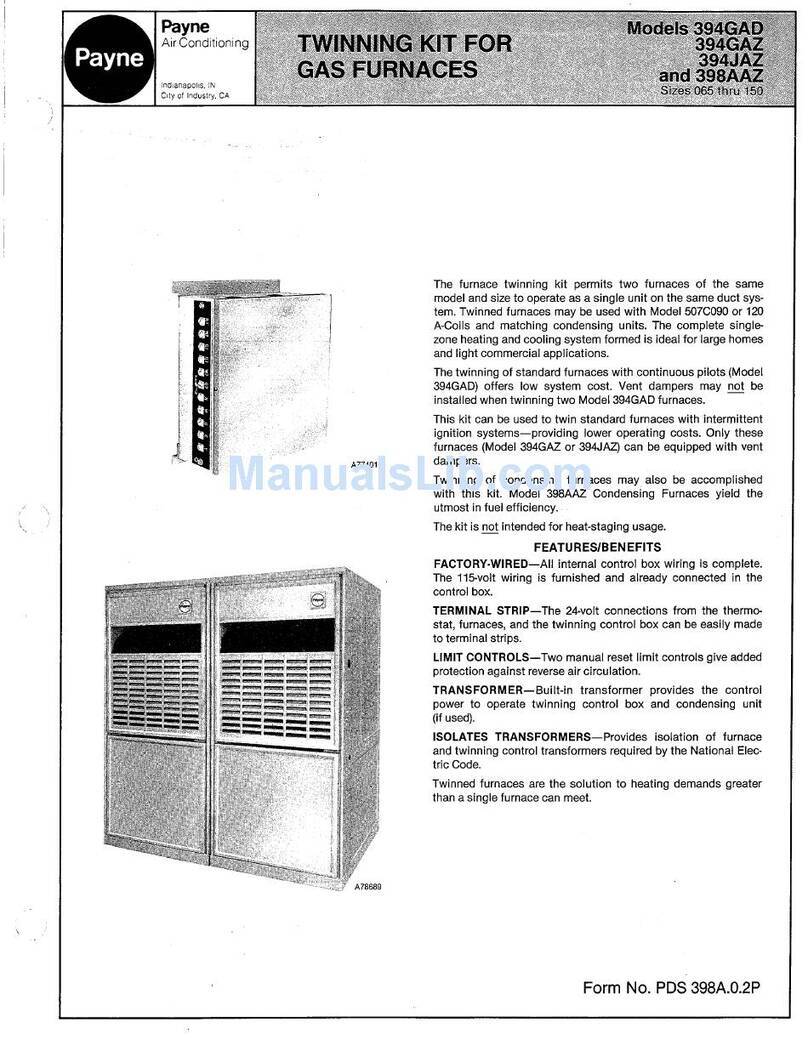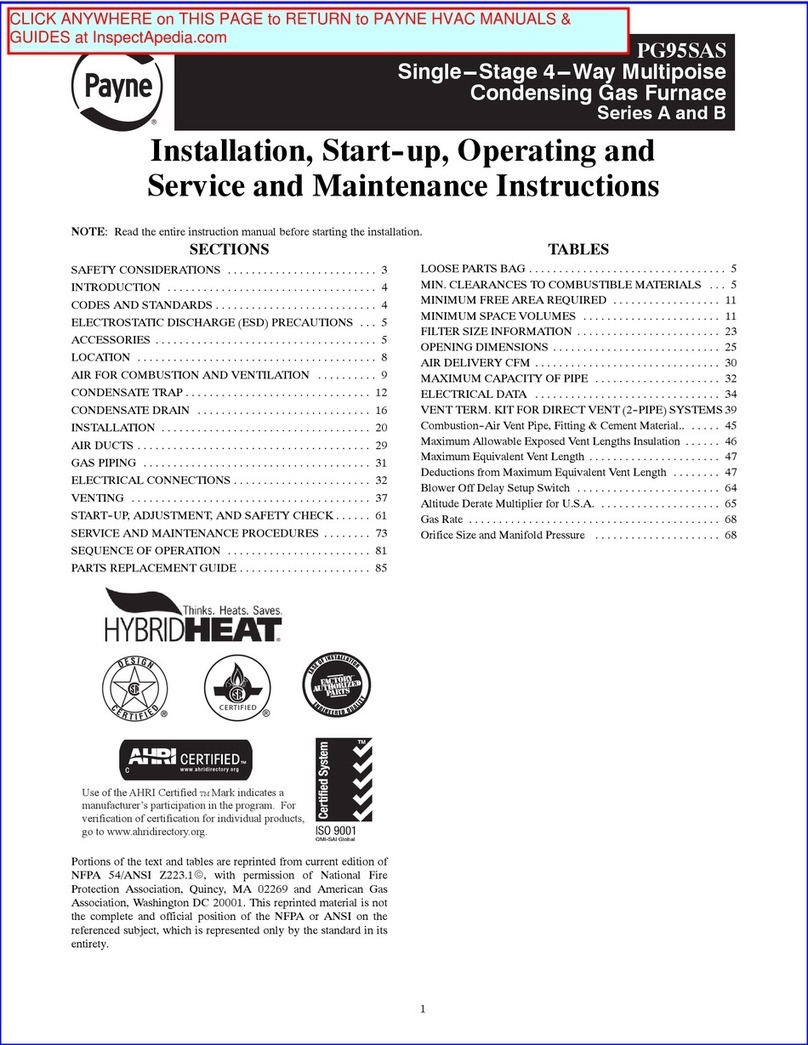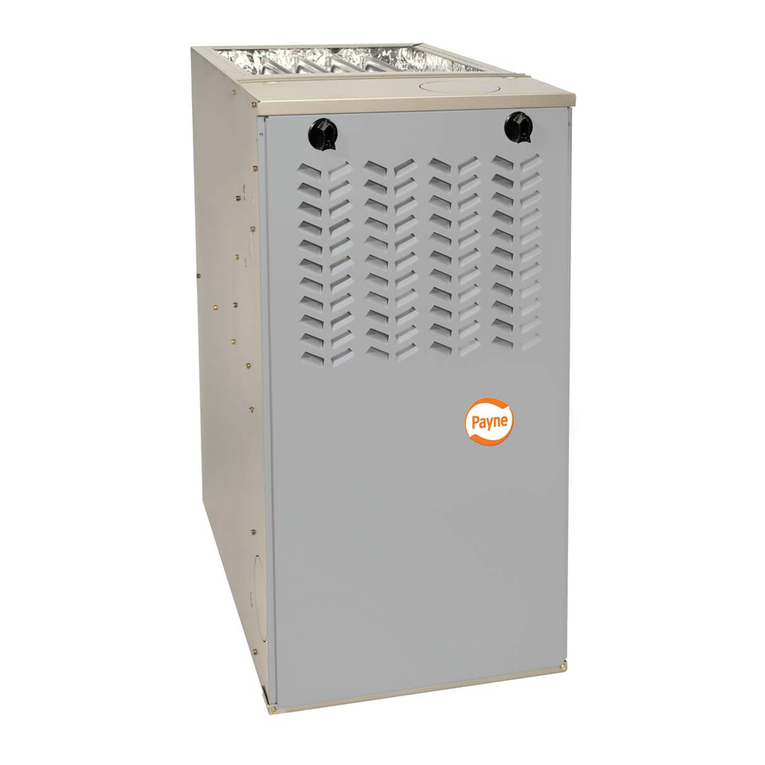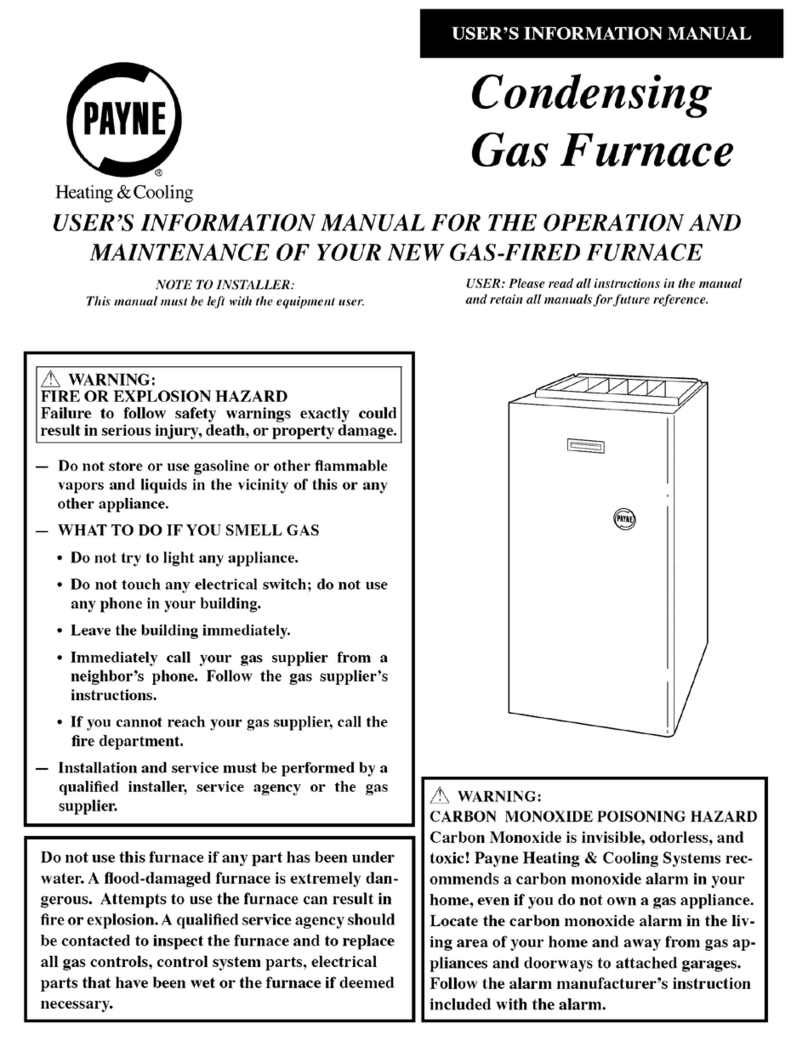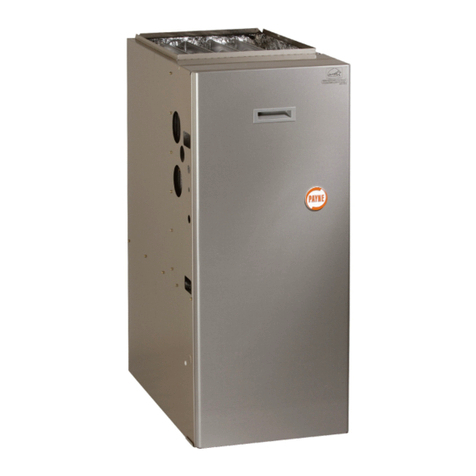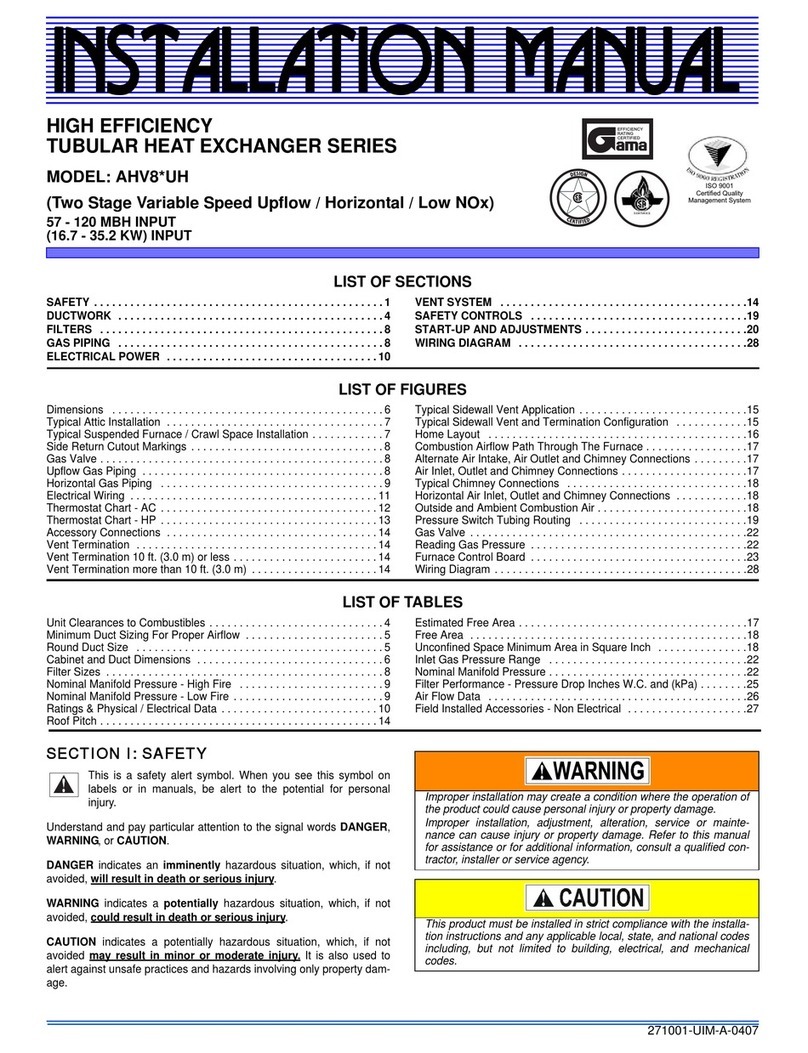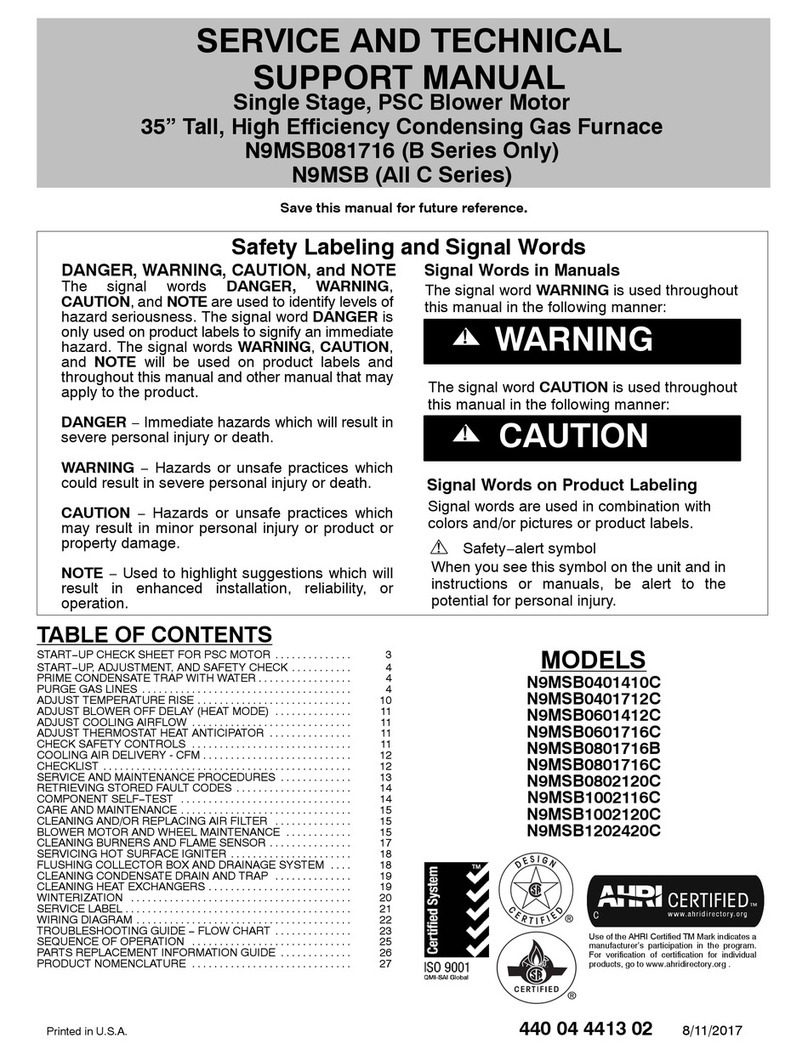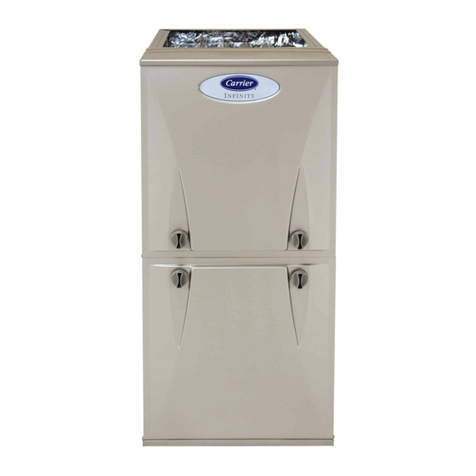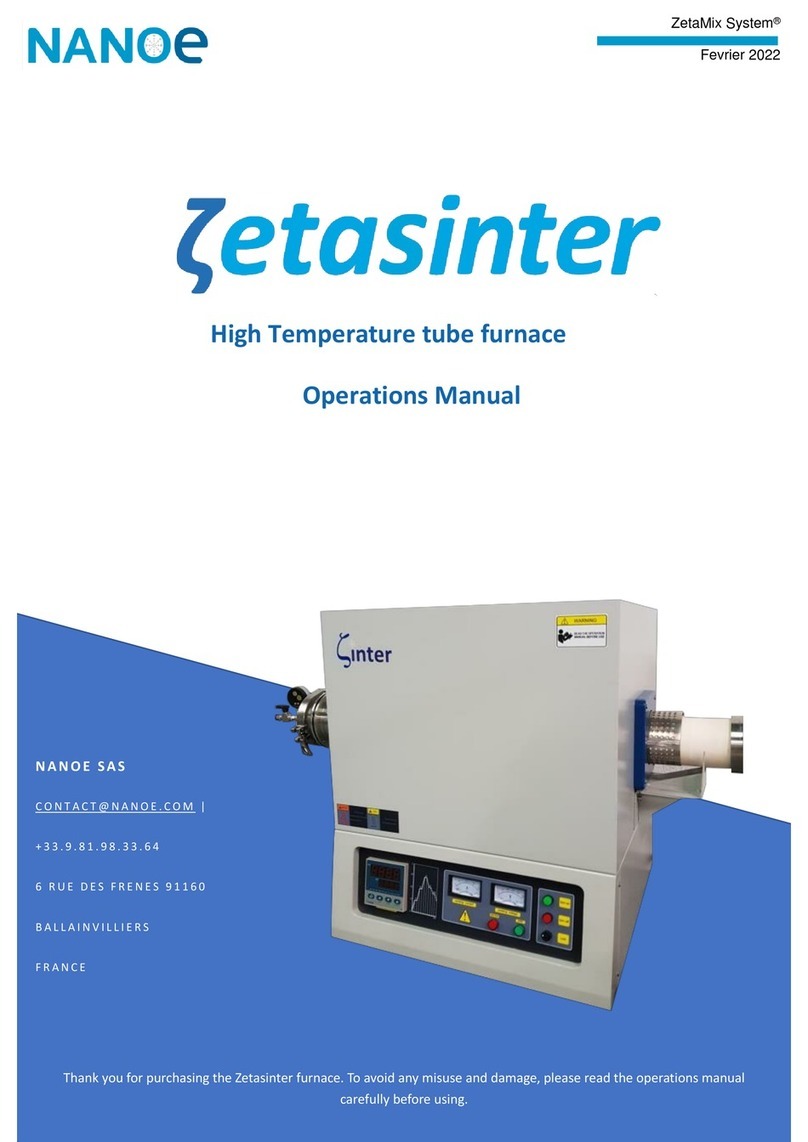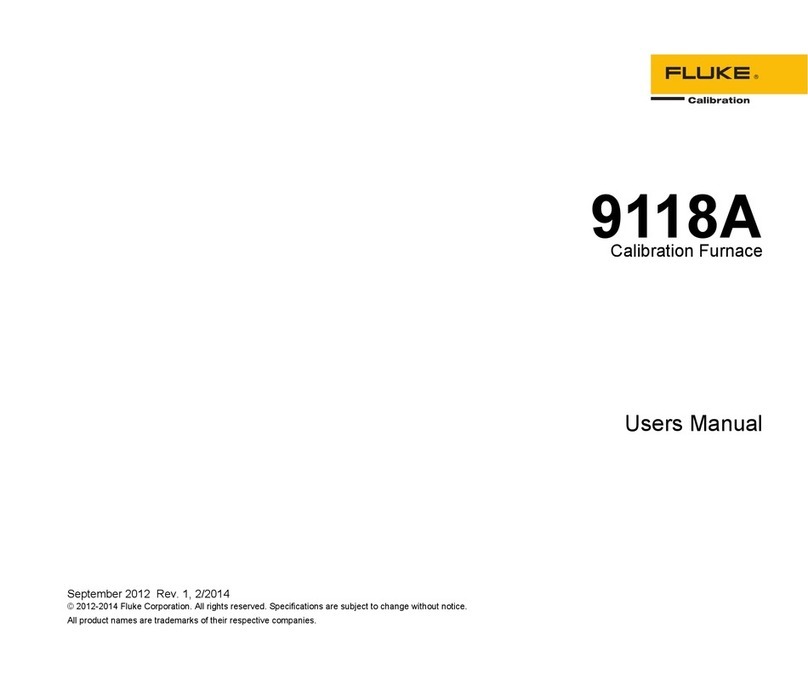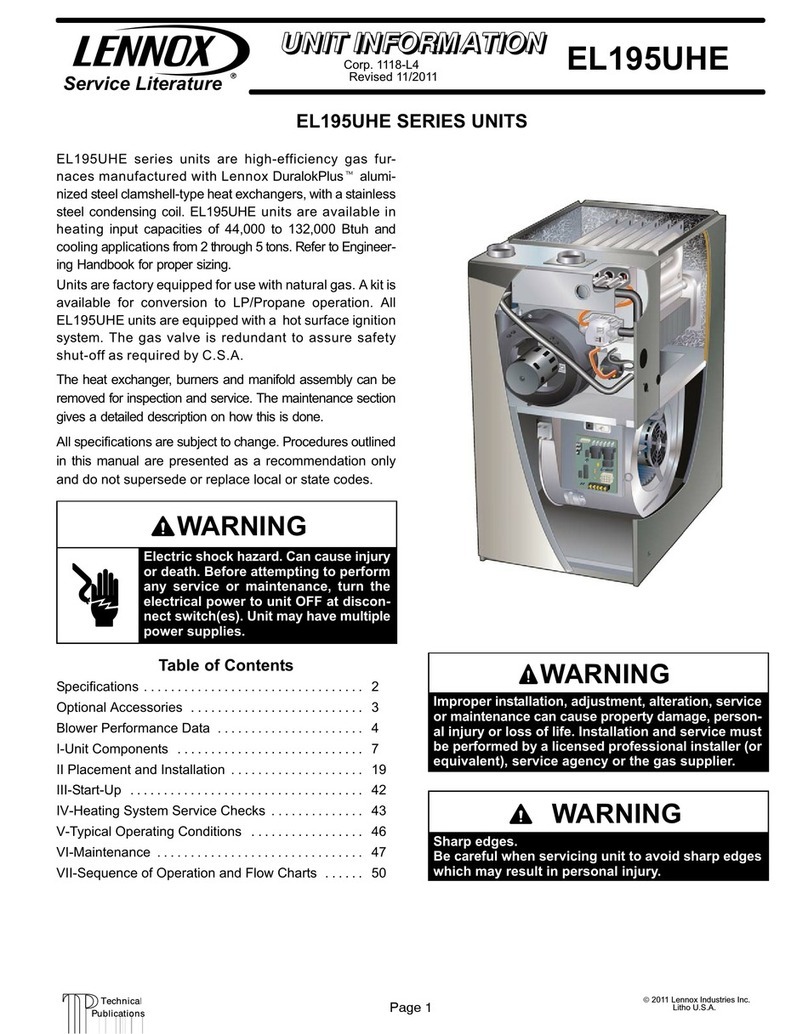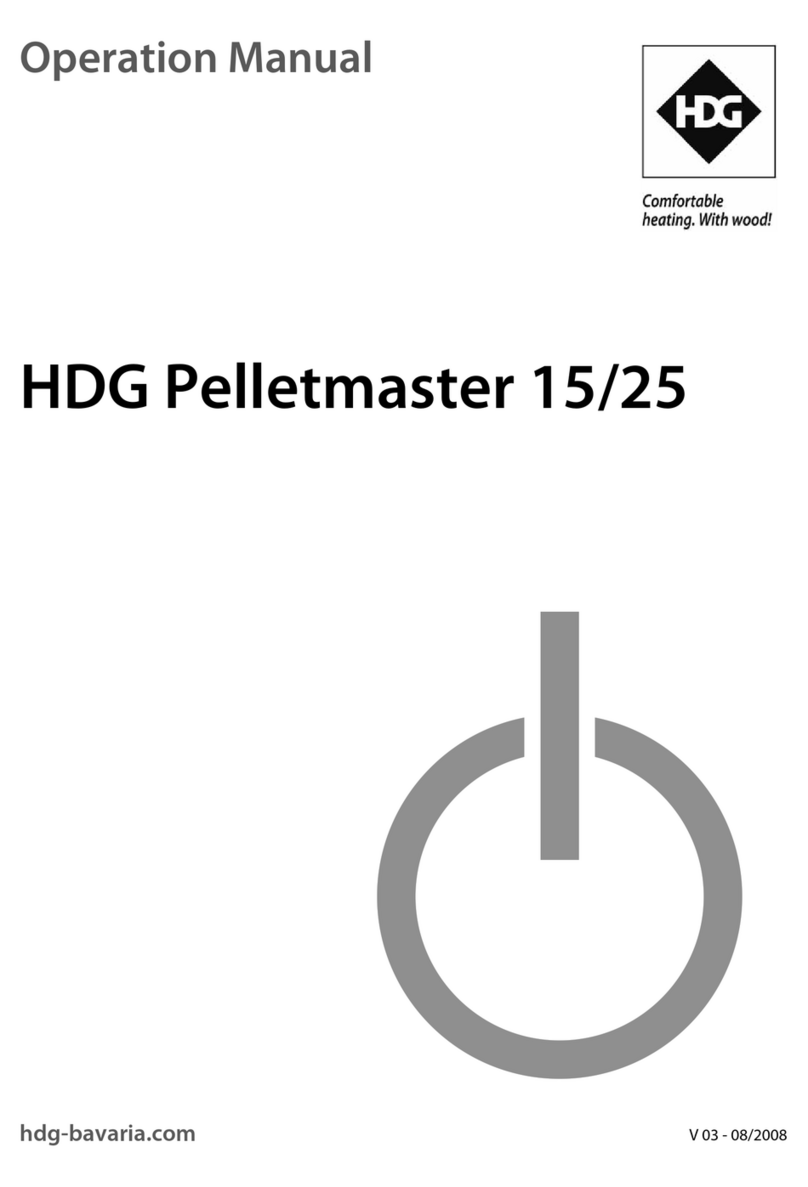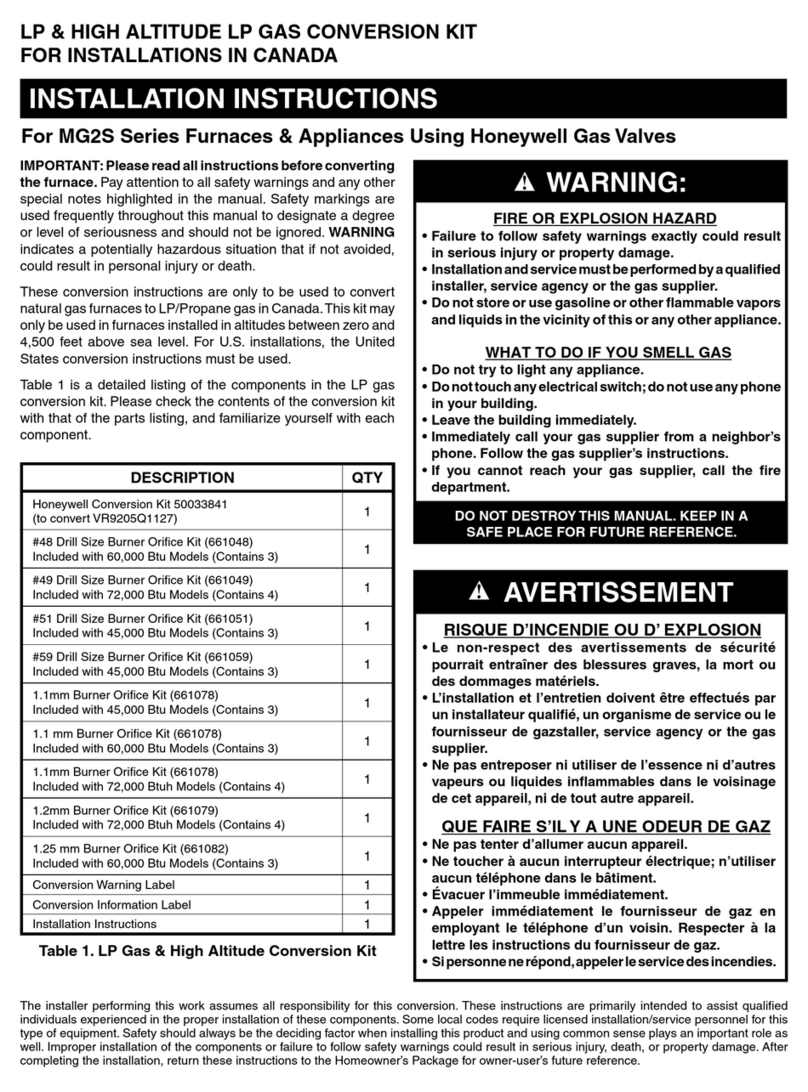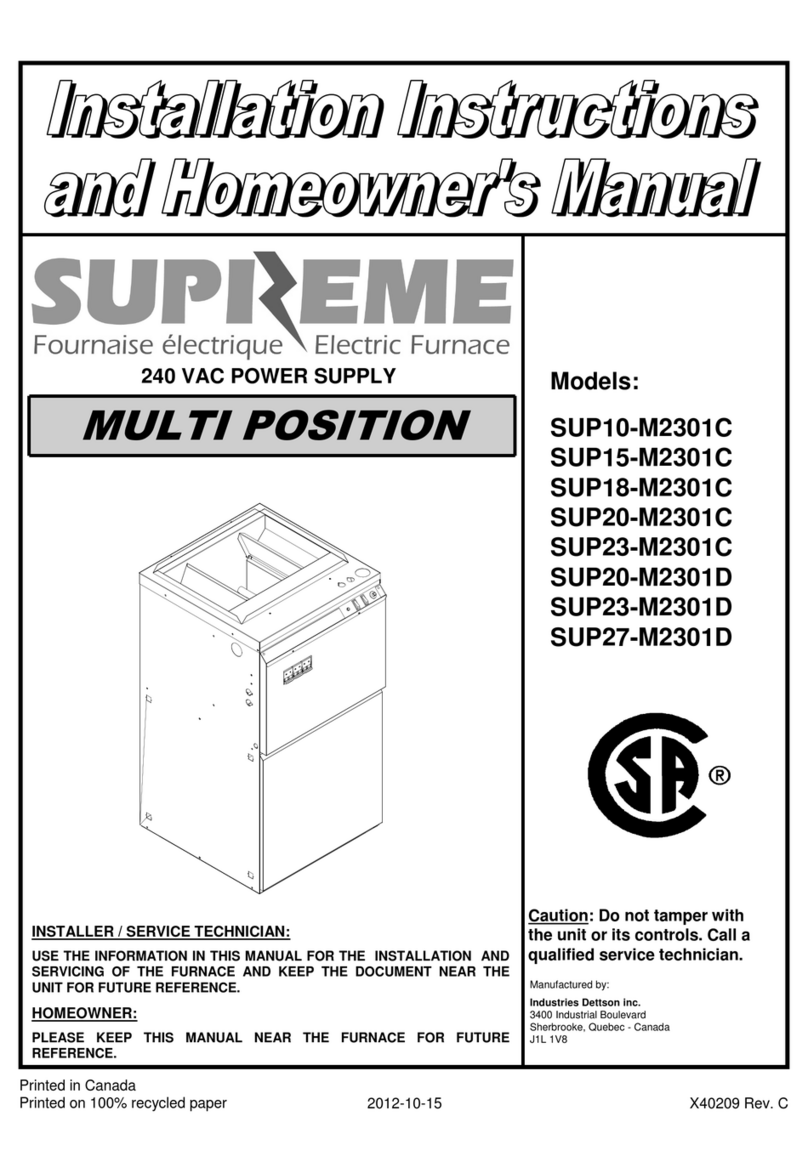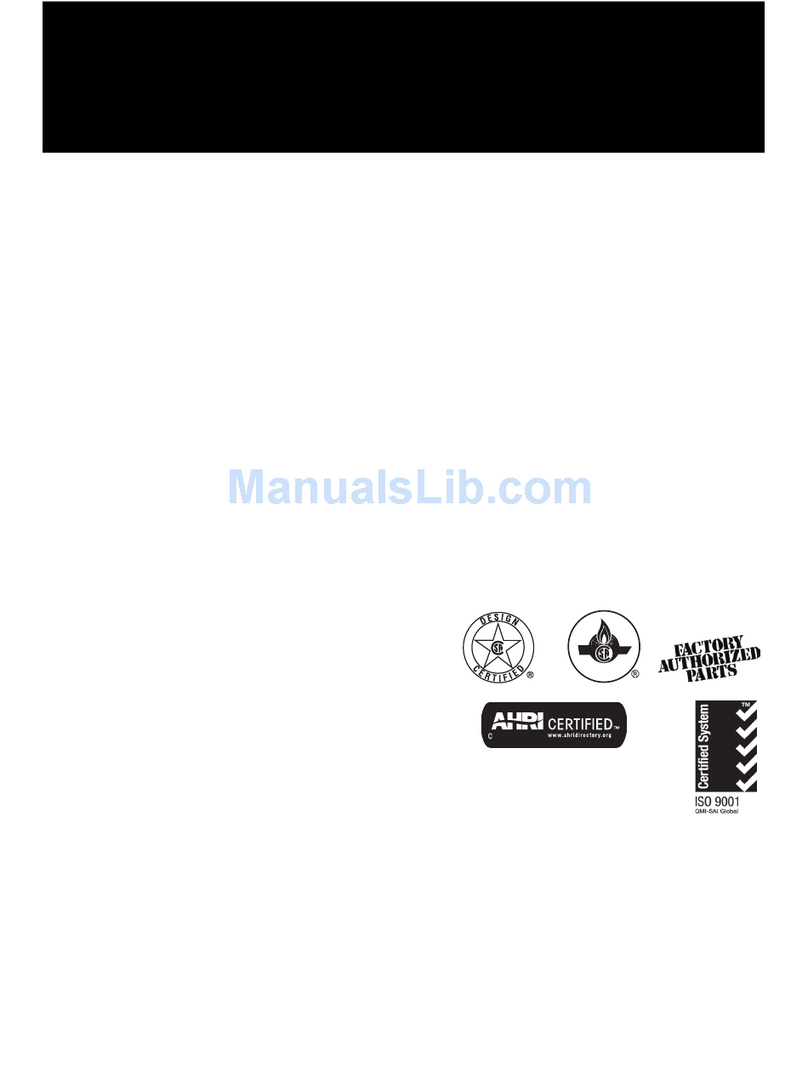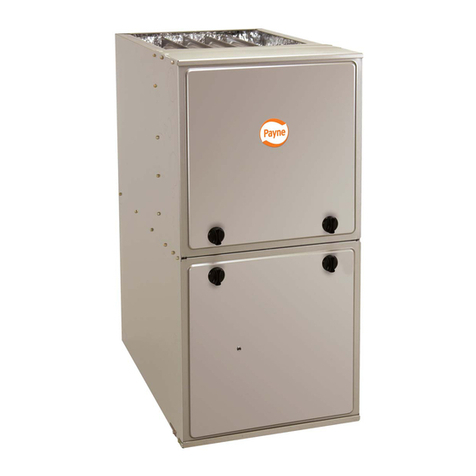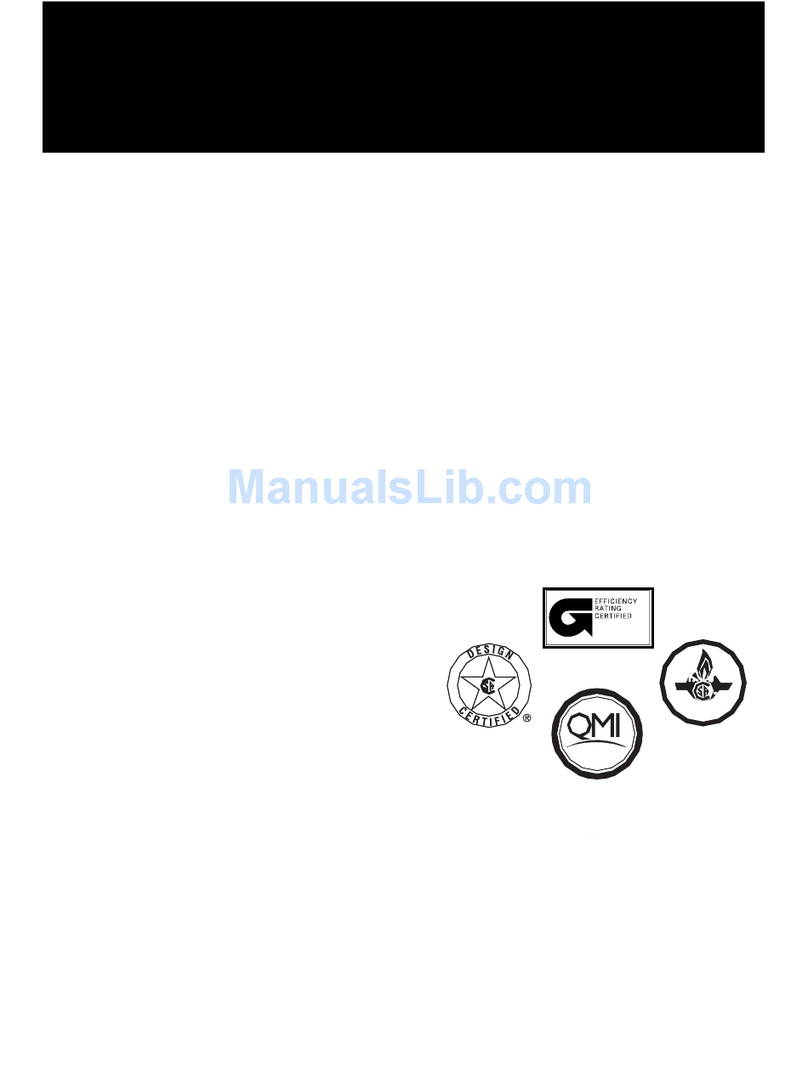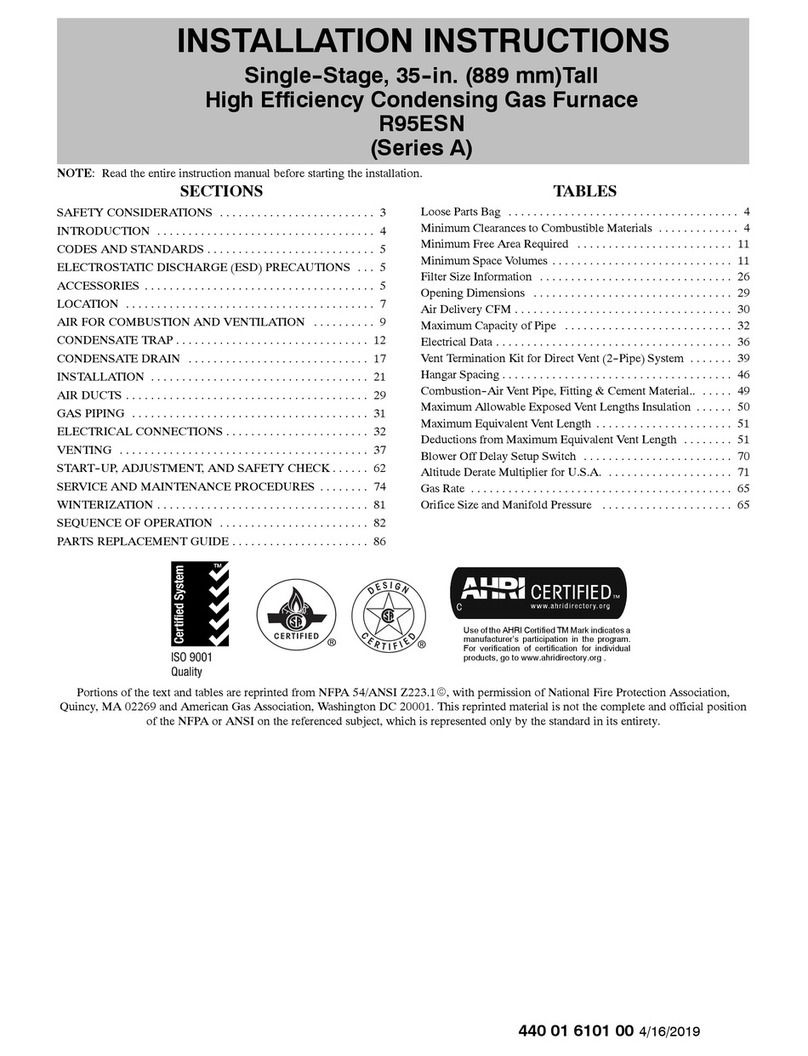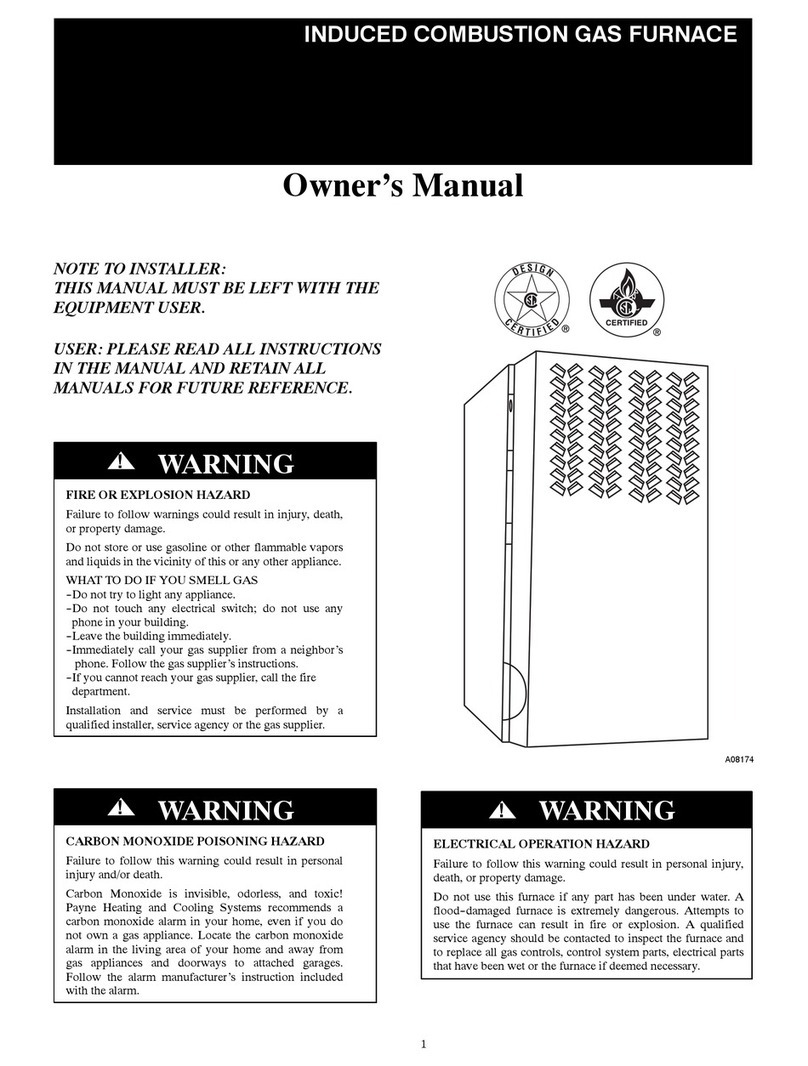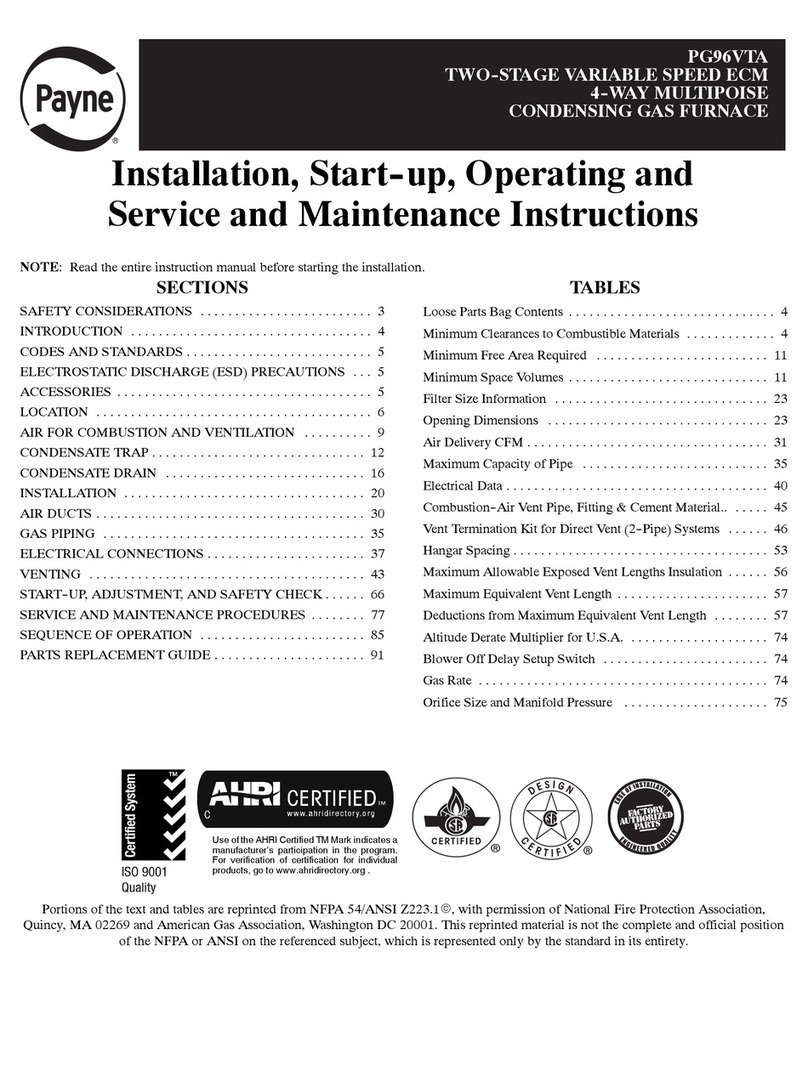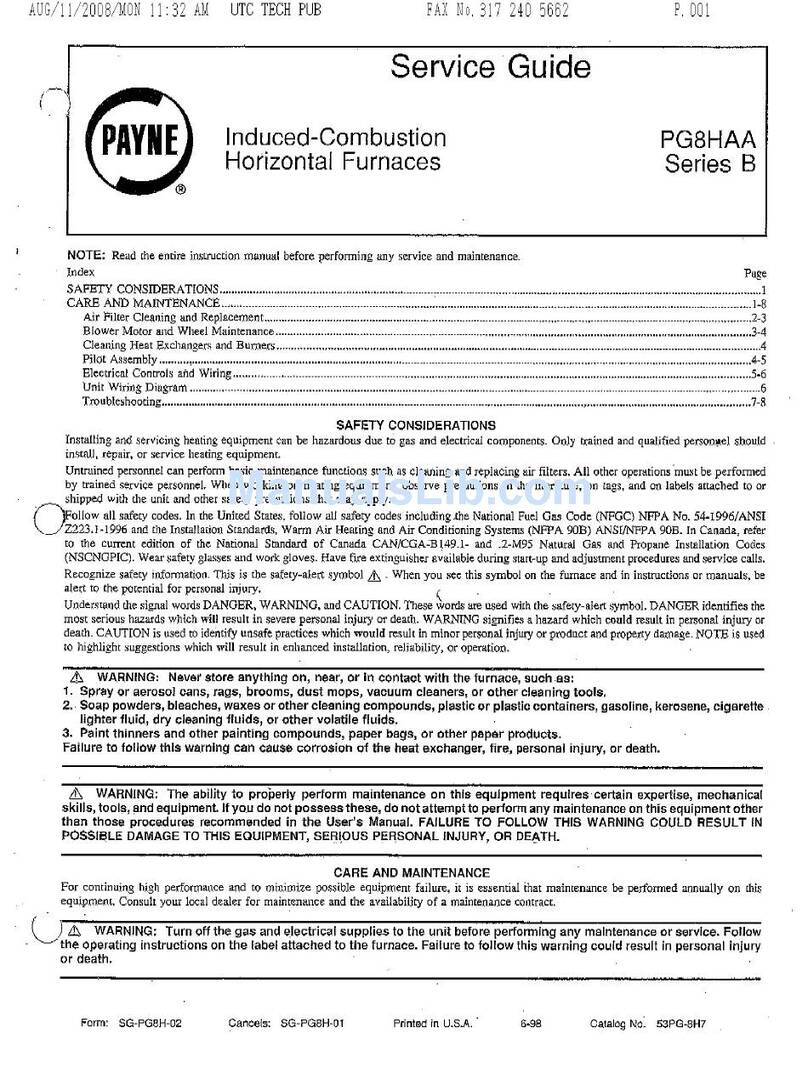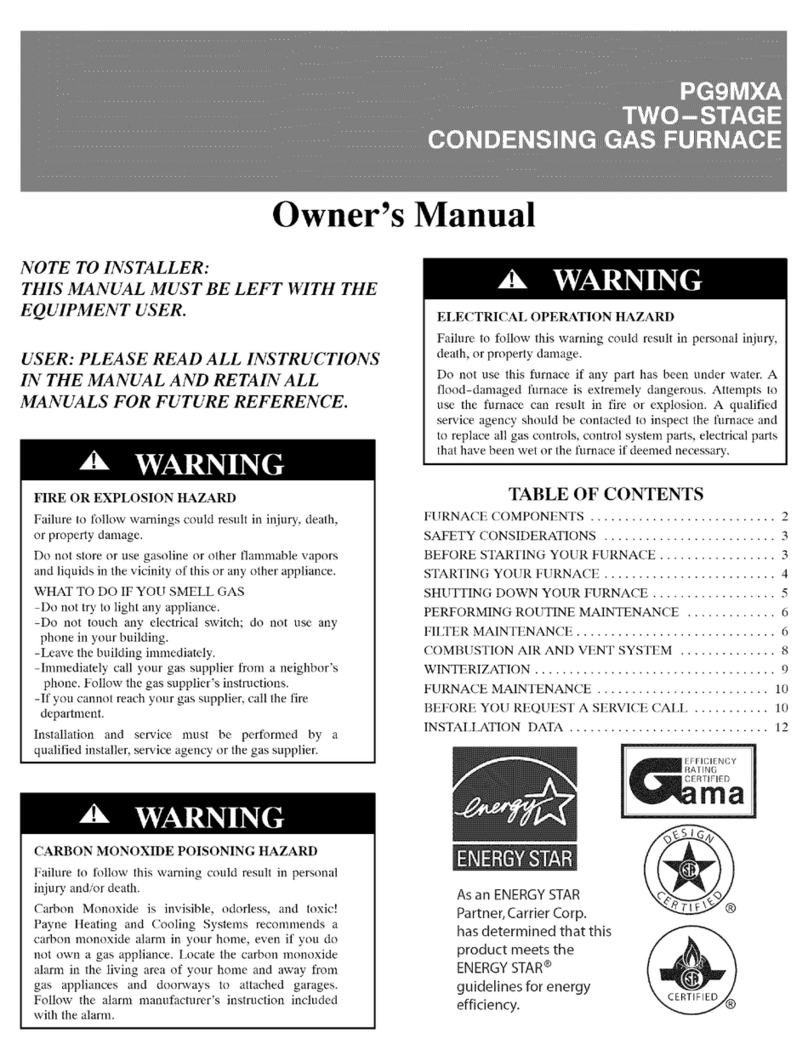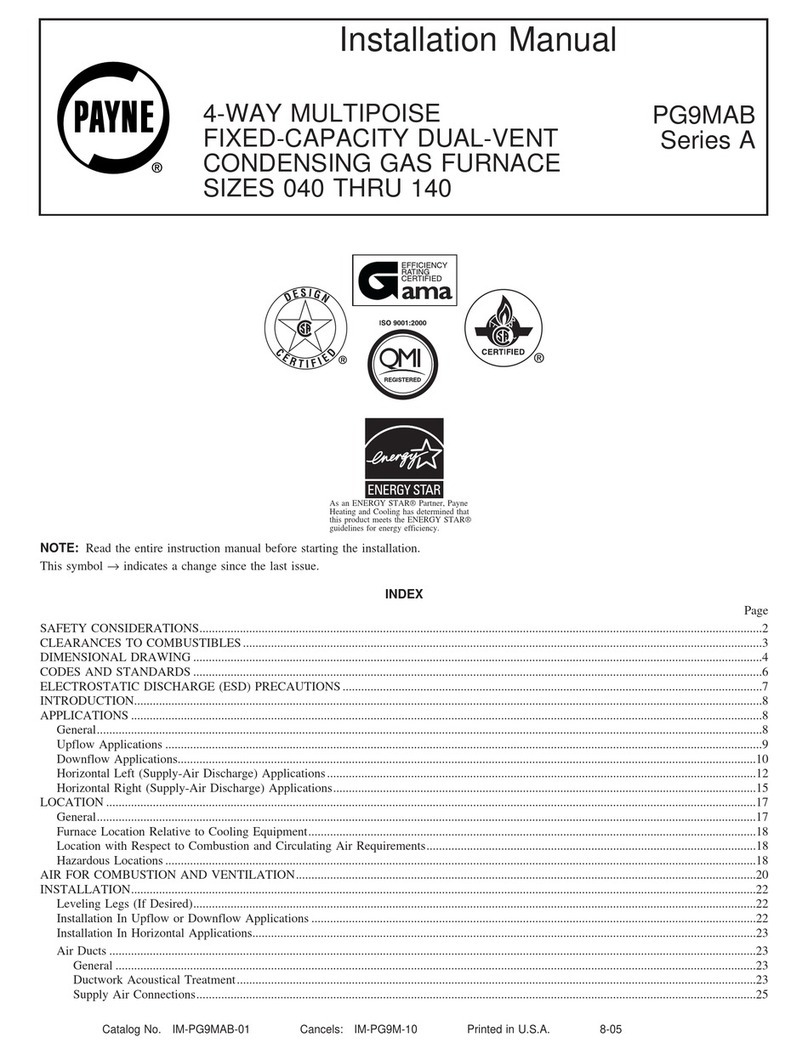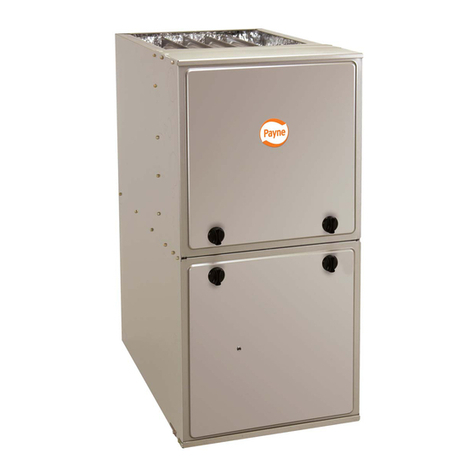IMPORTANT FACTS (DO'S AND DON'TS)
•DO: READ AND UNDERSTAND THIS MANUAL.
*DO: Have your furnace and vent system inspected ammally by a qualified service
technician.
•DO: Inspect your filter monthly and clean or replace when needed.
•DO: Provide adequate airflow m the furnace or efficient combustion and sale ventilation.
•DO: Keep your furnace flee and clear of insulating material. Some materials may be
combustible. Examine the furnace area when the furnace is installed or when insulation is
added.
•DO NOT: Enclose your furnace in an airtight room or seal it behind solid doors.
•DO NOT: Keep combustible materials, gasoline, and other flammable liquids or vapors
around your furnace.
•DO NOT: Cover your furnace in any manner.
*DO NOT: Store anything (including trash or debris) near your furnace.
*DO NOT: In any way block or restrict airflow around your furnace.
*DO NOT: In any way block or restrict airflow to your supply air and return air grills.
*DO NOT: Use your furnace room as a broom closet or a place to store any kind of chemical or cleaner.
3
•DO NOT: Contaminate the air used for combustion of your furnace with any kind of chemical or fumes. This could also cause
heat exchangers, metal vent systems or components to deteriorate.
NOTE: These chemicals or fumes are present in many products around the home, such as: water softener salts, any type of
household cleaning product, any type of laundry product, adhesives, paints, varnishes, paint strippers, waxes and plastics, etc.
During remodeling be sure the combustion air is fresh and uncontaminated. If these compounds are burned in your furnace,
the heat exchangers and metal vent system may deteriorate.
NOTE: The qualified installer or agency must use only factory-authorized replacement parts, kits, and accessories when mod-
ifying this product.
This furnace contains safety devices which must be manually reset. If the furnace is left unattended for an extended period of
time, have it checked periodically for proper operation. This precaution will prevent problems associated with no heat, such
as frozen water pipes, etc. See "Before You Request a Service Call" section in this manual.
SAFETY CONSIDERATIONS
Installing and servicing heating equipment can be hazardous due to gas and electrical components. Only trained and qualified
personnel should install, repair, or service heating equipment.
Untrained personnel can perform basic maintenance functions such as cleaning or replacing air filters. All other operations
must be performed by trained service personnel. Observe safety precautions in this manual, on tags, and on labels attached to
the furnace, and other safety precautions that may apply.
Recognize safety information. This is the safety-alert symbol z_. When you see this symbol on the furnace and in instructions
or manuals, be alert to the potential for personal injury.
Understand the signal words DANGER, WARNING, and CAUTION. These words are used with the safety-alert symbol.
DANGER identifies the most serious hazards which will result in severe personal injury or death. WARNING signifies hazards
which could result in personal injury or death. CAUTION is used to identify unsafe practices which would result in minor
personal injury or product and property damage. NOTE is used to highlight suggestions which will result in enhanced instal-
lafion, reliability or operation.
WARNING: Do not keep combustible materials, gasoline, and other flammable liquids or vapors around
your furnace.
WARNING: Fire Hazard! Failure to keep insulation clear of furnace could result in fire, personal injury, or
death.
BEFORE STARTING YOUR FURNACE
Examine the furnace installation to determine that:
1. All flue gas carrying areas external to the furnace (i.e. chimney, vent connector) are clear and free of obstructions.
2. The vent connector is in place, slopes upward and is physically sound without holes or excessive corrosion.
